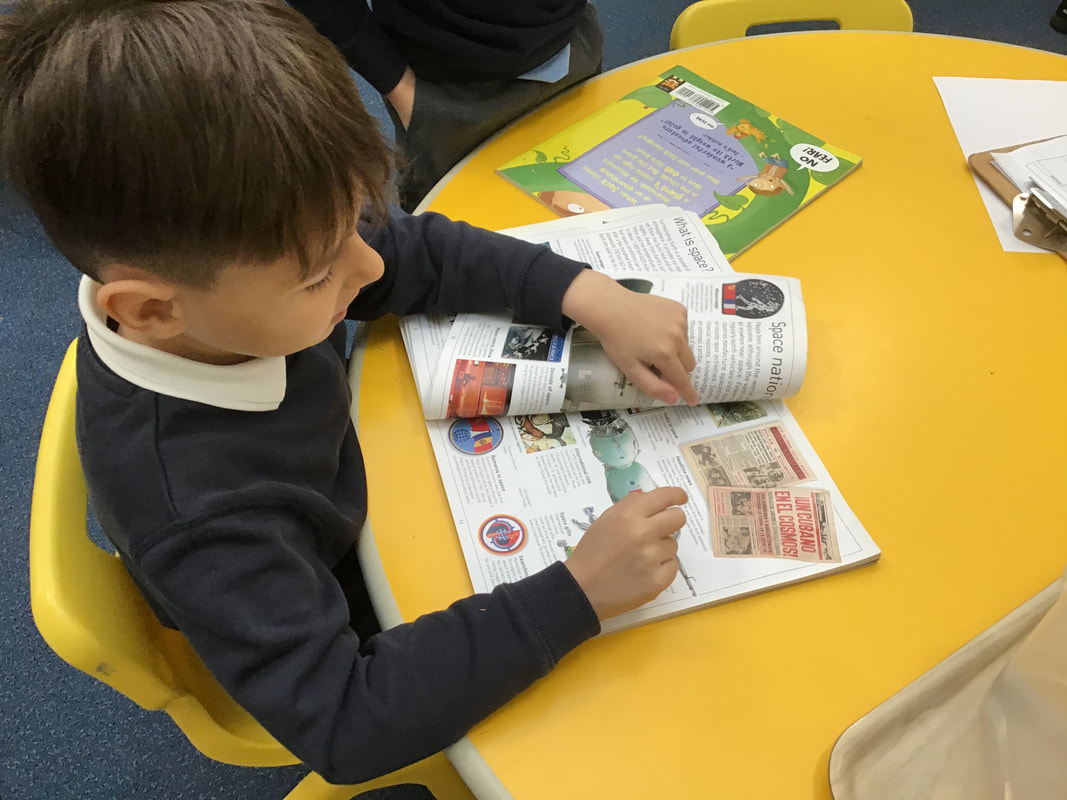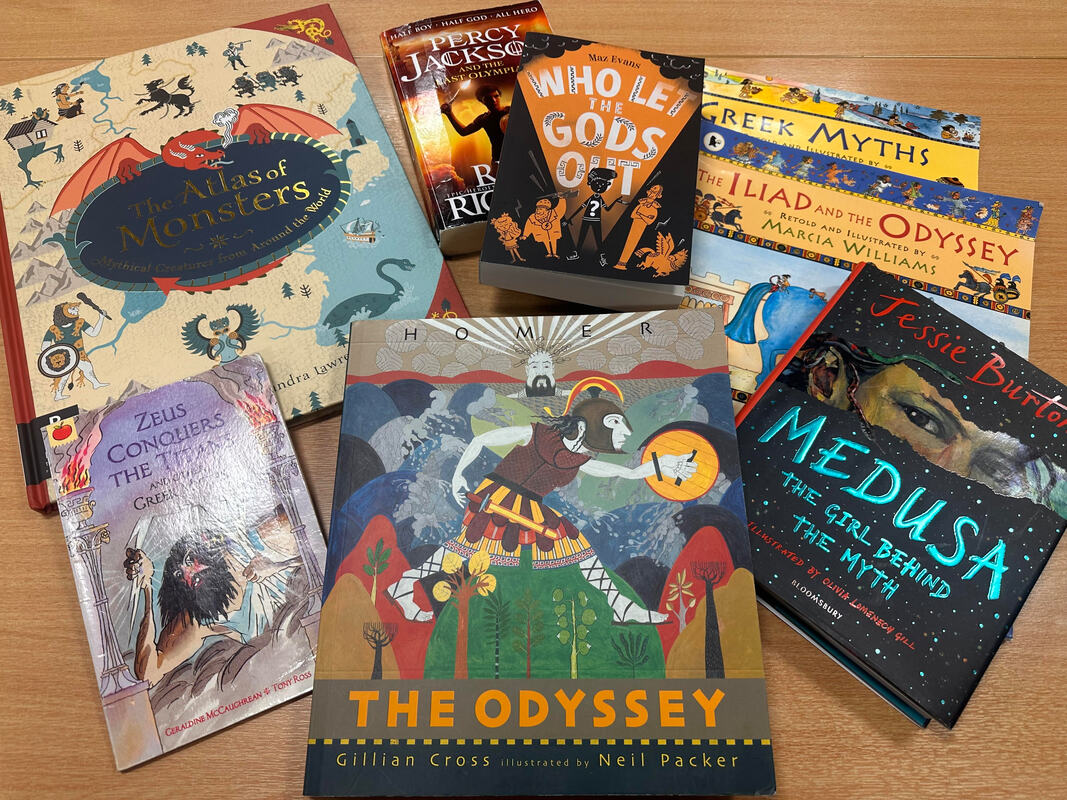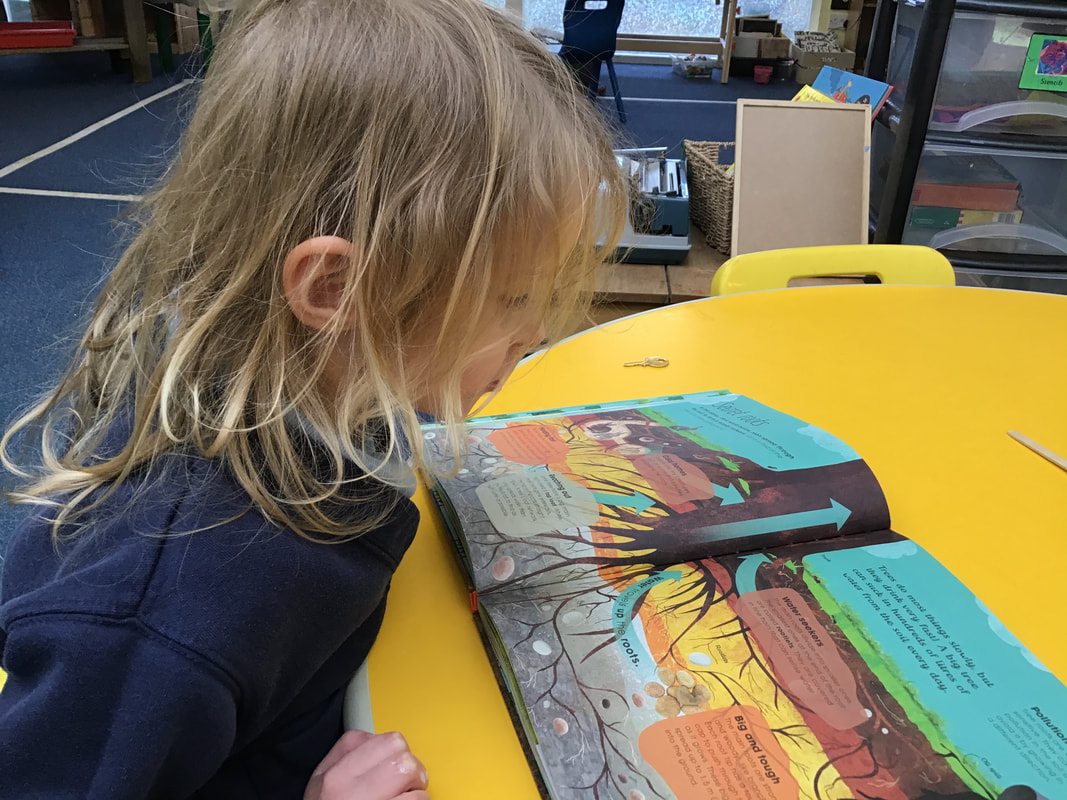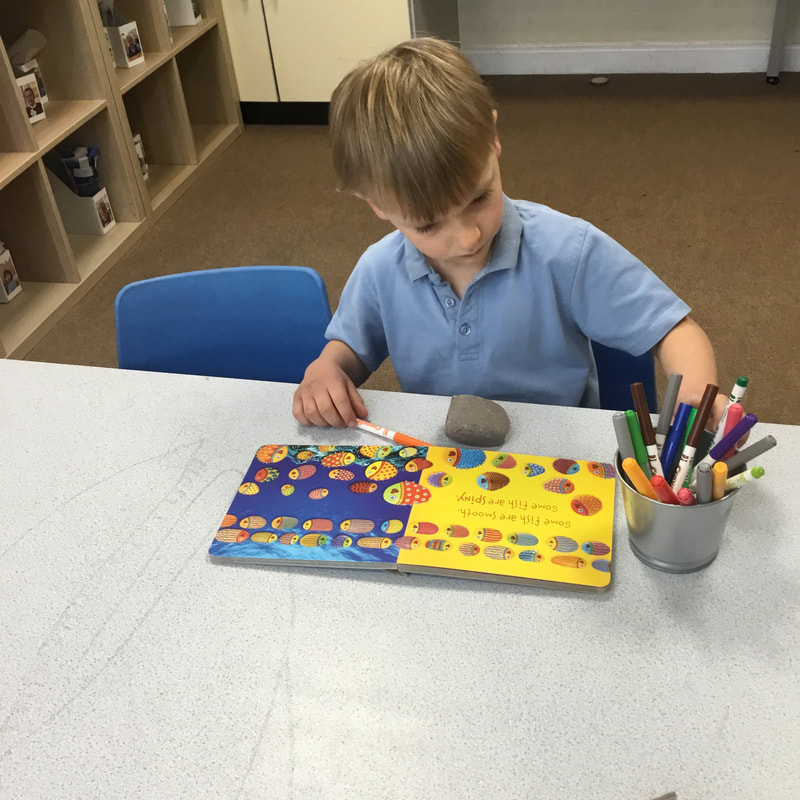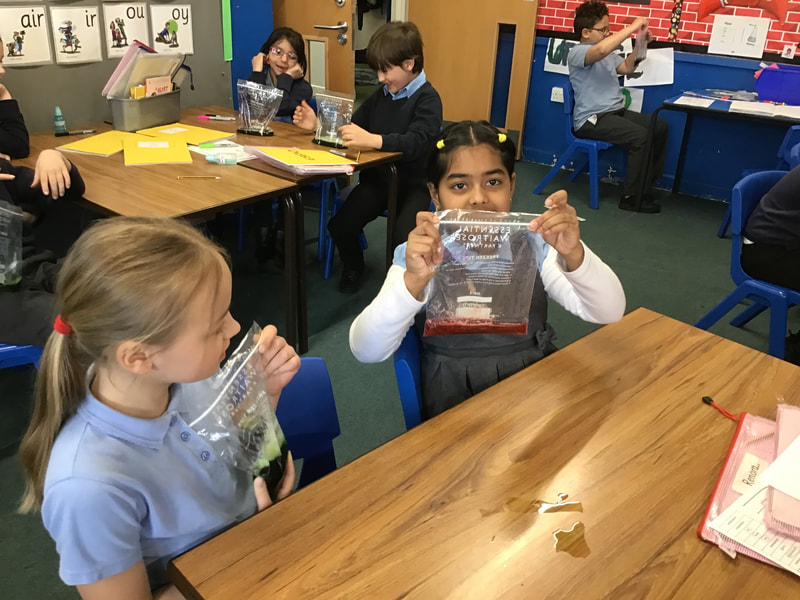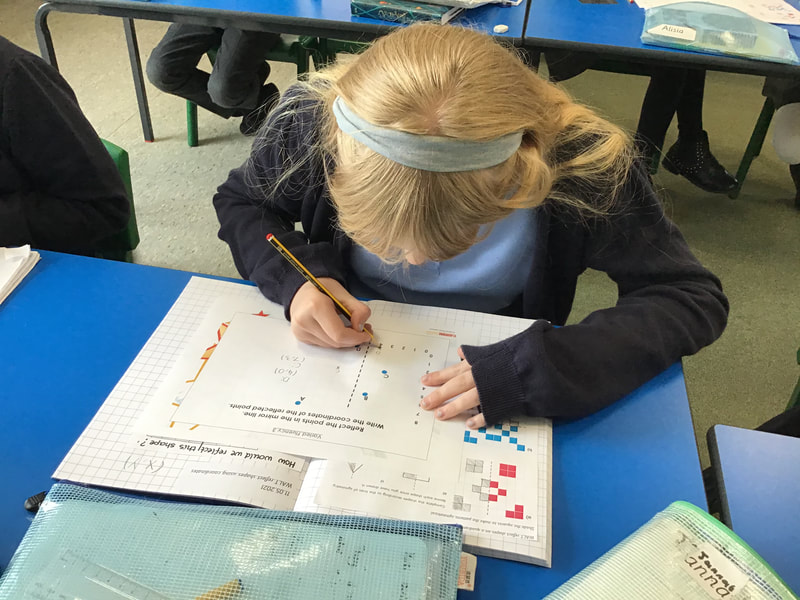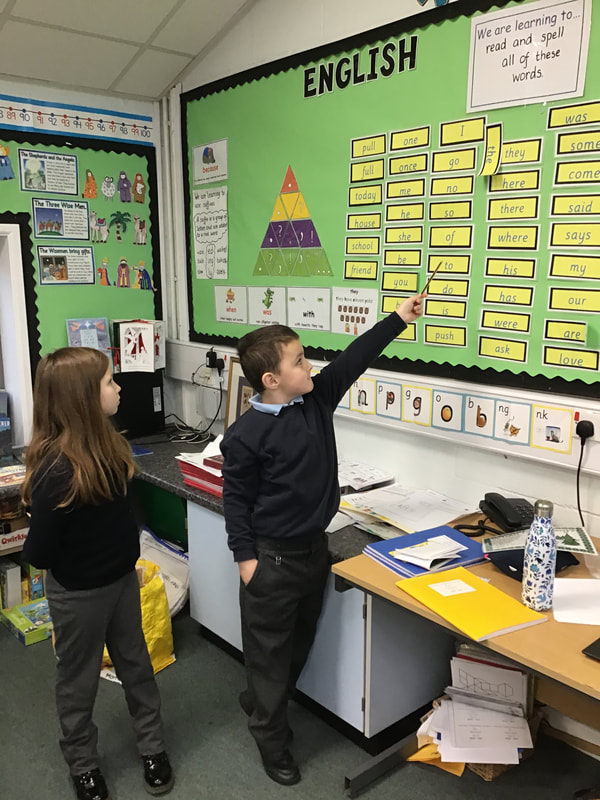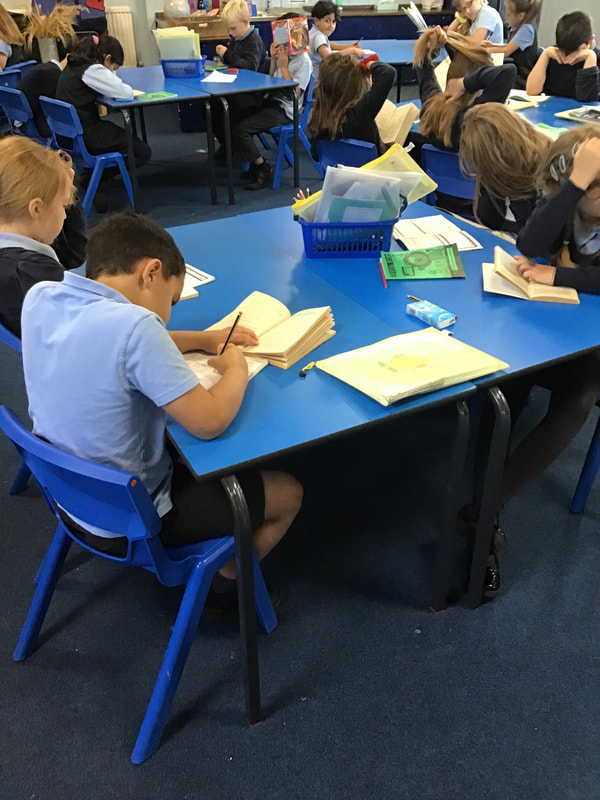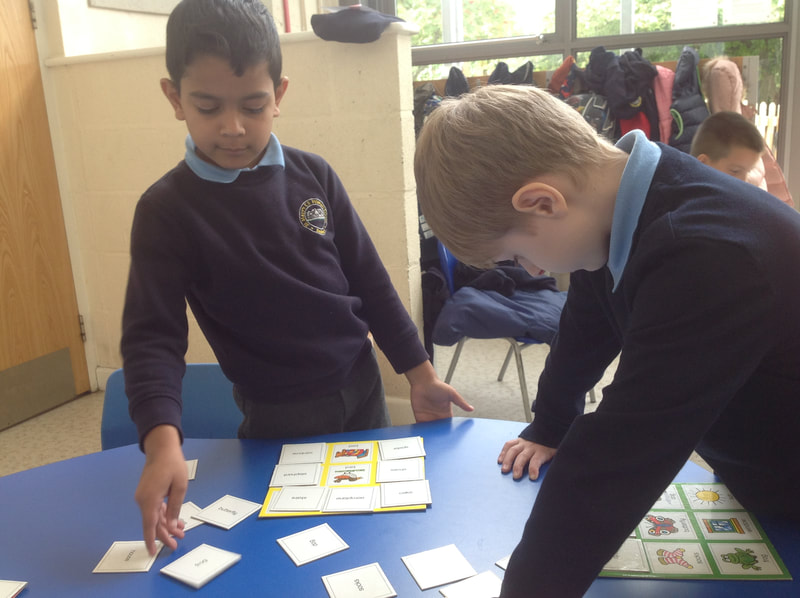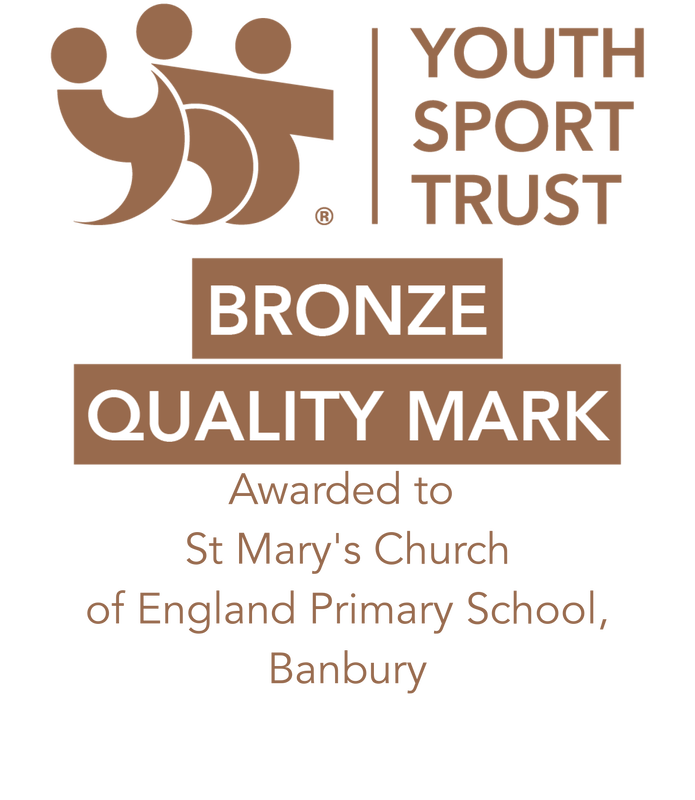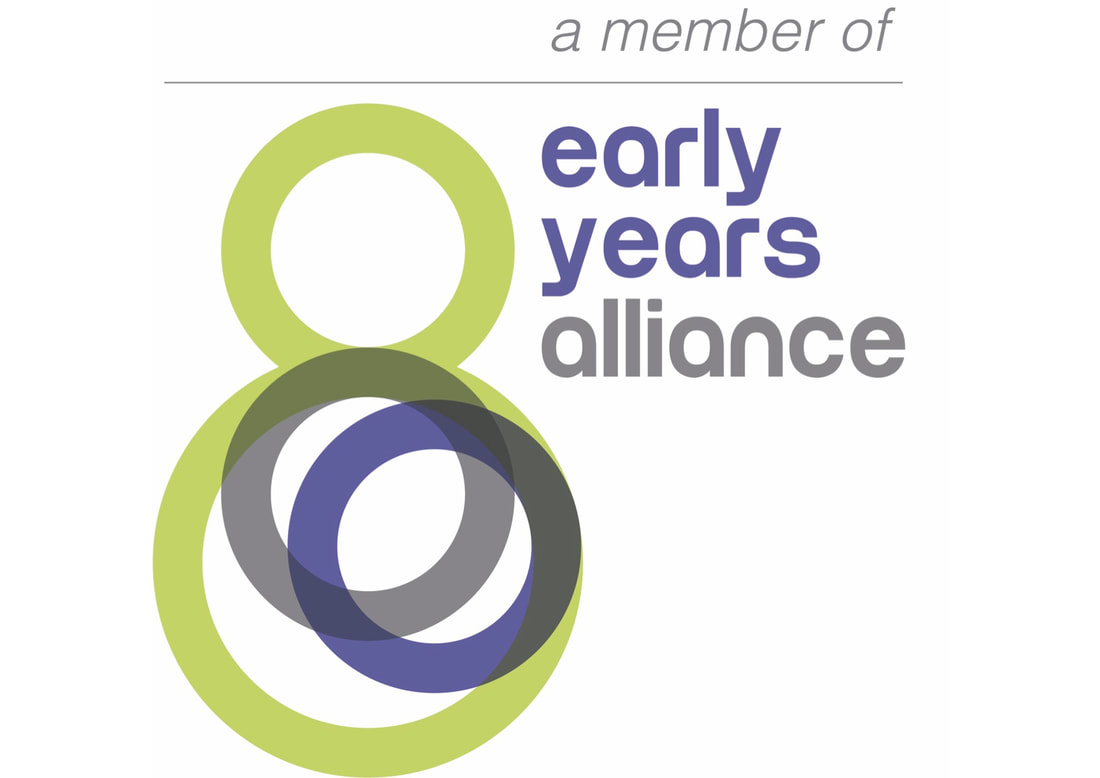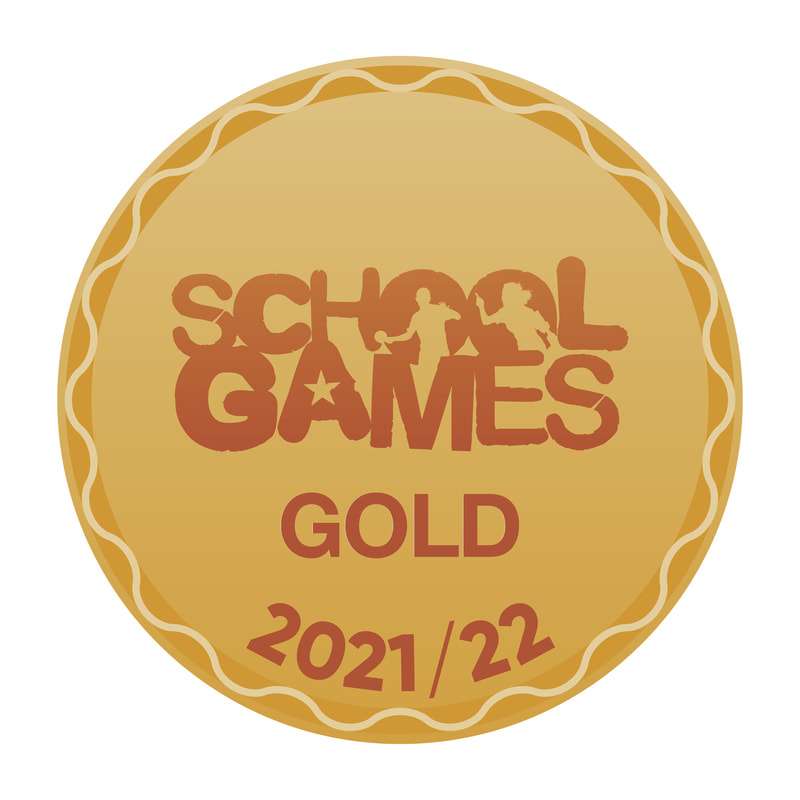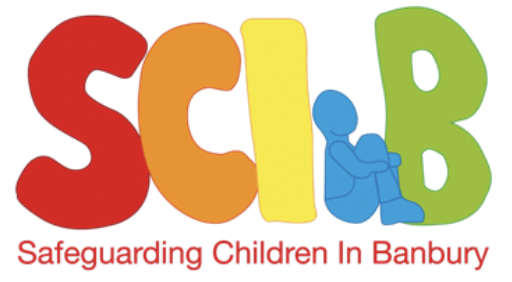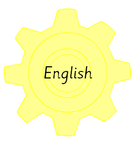
Reading is a golden thread in our curriculum; reading enables children to make sense of the world they live in and to extend their knowledge about specific aspects of the projects they are undertaking. Texts are chosen to ensure children experience a wide variety over time, broaden vocabulary and understanding of grammar and allow children to experience reading as a pleasurable experience which underpins all their learning across the curriculum.
Texts that we use include magazines, comics, maps, picture books, dual language books, phonic readers, book banded books, dictionaries and thesauruses, atlases, class made books, poetry, recipe books, information texts, explanation texts, diaries, posters and visual texts. Research (Perfetti et al 1996) highlights the importance of keeping the texts interesting so as to engage pupils. We are proud of our investment in books at St Mary's.
Early Years Reading
On entry to school early years begins with a focus on environmental print; including logos/text types/fonts/handwritten and typed with the intention of getting children to perceive themselves as a reader both in school and out of school.
Class texts are read at least daily and repeated to allow children to build fluency and understanding of the vocabulary across a range of genres. Stories are introduced using puppets and visual aids. Use of the Tales Toolkit helps children to understand how stories are structured and helicopter stories are used to explore character, setting and develop imagination.
Phonics
Read, Write, Inc
From the moment children join us, our focus is to encourage children to want to read for themselves, and to love reading! In order to get children onto the reading spine as quickly as possible, we start by teaching our Reception cohort how to ‘read’ sounds, and how these look written down. Children are taught through mnemonics to support their letter formations, and short stories to help them remember their sounds.
Once children have been taught words linked to their new sound, they will practise reading these regularly to build speed and fluency. Children will also practise reading and spelling ‘red words’ throughout the course of the scheme. Red words such as: said, the, and my, contain tricky parts that are trying to trick us! We teach them how to sound it out, and then identify the part that is ‘tricky.’
Children will take home fully decodable books, which are familiar to them, so that they feel confident when reading these.
At the end of each half-term, all children are assessed. We assess how accurately, and fluently they can read words, along with how many sounds they have secured. This information is then used to decide which reading group is best suited to the individual child. If children are making good progress, they will move groups, however, if we feel a child is struggling, they will receive one-to-one or small group support by a Read Write Inc trained member of staff.
Phonics support continues for as long as a child requires it.
Parental workshops to support early reading and phonics learning are delivered annually.
Guided Reading
Each week, the children at St Mary’s in Key Stage 1 and 2, undertake a carousel of activities to develop comprehension;
Early Years Reading
On entry to school early years begins with a focus on environmental print; including logos/text types/fonts/handwritten and typed with the intention of getting children to perceive themselves as a reader both in school and out of school.
Class texts are read at least daily and repeated to allow children to build fluency and understanding of the vocabulary across a range of genres. Stories are introduced using puppets and visual aids. Use of the Tales Toolkit helps children to understand how stories are structured and helicopter stories are used to explore character, setting and develop imagination.
Phonics
Read, Write, Inc
From the moment children join us, our focus is to encourage children to want to read for themselves, and to love reading! In order to get children onto the reading spine as quickly as possible, we start by teaching our Reception cohort how to ‘read’ sounds, and how these look written down. Children are taught through mnemonics to support their letter formations, and short stories to help them remember their sounds.
Once children have been taught words linked to their new sound, they will practise reading these regularly to build speed and fluency. Children will also practise reading and spelling ‘red words’ throughout the course of the scheme. Red words such as: said, the, and my, contain tricky parts that are trying to trick us! We teach them how to sound it out, and then identify the part that is ‘tricky.’
Children will take home fully decodable books, which are familiar to them, so that they feel confident when reading these.
At the end of each half-term, all children are assessed. We assess how accurately, and fluently they can read words, along with how many sounds they have secured. This information is then used to decide which reading group is best suited to the individual child. If children are making good progress, they will move groups, however, if we feel a child is struggling, they will receive one-to-one or small group support by a Read Write Inc trained member of staff.
Phonics support continues for as long as a child requires it.
Parental workshops to support early reading and phonics learning are delivered annually.
Guided Reading
Each week, the children at St Mary’s in Key Stage 1 and 2, undertake a carousel of activities to develop comprehension;
Pre read |
Guided session |
Follow up task |
Comprehension skills |
Vocabulary skills |
Familiarity/ Vocabulary focus linked to the text |
Specific reading skill to be taught. |
Apply/use skill that has been taught in Guided session. |
Texts that children can read independently and tasks to support comprehension. |
Growing Tier 2 and 3 vocabulary |
Central to the carousel is a guided read with the teacher that focusses on comprehension rather than decoding (although for non-fluent readers this continues to be aspect that receives attention).
These guided sessions include the following strategies;
Prior to the guided input, the group discuss the focus question/vocabulary from the pre read session that the children have undertaken in the pre teach lesson.
The follow up session is an opportunity to use what they have learnt in the guided session and apply independently or collaboratively. The sessions make use of of a wide variety of texts in a range of formats. The texts we select aim to open up possibilities for interpretation rather than a pre-determined answer.
Guided reading groups are monitored, assessed and adjusted to ensure that the children are in the appropriate group - notes are made about children’s responses during the session linked to national Curriculum and Target Tracker statements and will enable the teacher to track pupil progress.
Children who find reading difficult are supported throughout school with additional 1:1 support (for some this involves reading with a volunteer) and group interventions to ensure they make progress and enjoy reading for pleasure and obtaining information to support their interests and learning.
Children in KS2 who are not reaching Age Related Expectations are assessed using SALFORD reading tests to track progress (reading ages).
Reading at home
We recommend that the children regularly read at home as it is a great way to encounter a wide range of authors and genres. It will also allow them to understand and use a wide range of vocabulary. They should aim to read on at least four occasions in any one week for a minimum of 10-15 minutes at a time.
In EYFS, children take home a book that has been chosen by the children to enjoy reading at home. RWI books are also sent home to support word and sound recognition and start the journey of good reading habits. There is a ‘Going home’ library that children and parents can select from at any time.
In Year 1 children will be given a fully decodable text based on the sounds that they have already learnt. From Year 2 onwards, children will select a book (supported by the St Mary's team) to enjoy in school and at home. Parents will be asked to read with their children and record their reading in their child’s reading diary four times a week. Teachers will collect in reading records weekly to ensure that regular reading is taking place. If a child is not reading regularly at home, we will contact parents to offer support.
Classes will arrange reading areas to ensure that all children are supported with their reading choices.
Promoting a love of texts
We have implemented a range of strategies to promote reading for pleasure;
These guided sessions include the following strategies;
- Predicting - making a logically plausible guess as to what will happen next.
- Questioning - asking questions about the text to expose different layers of meaning.
- Clarifying - Checking how specific words and phrases have been understood.
- Summarising - Stating the main events, actions, or ideas in the text.
- Thinking aloud - Reading a few sentences or a paragraph and verbalising what has been understood. (teacher and pupil think aloud)
- Noting the text structure - Highlighting the main linguistic features of a specific text-type.
- Visualising - Developing a visual image of the text (story mapping)
Prior to the guided input, the group discuss the focus question/vocabulary from the pre read session that the children have undertaken in the pre teach lesson.
The follow up session is an opportunity to use what they have learnt in the guided session and apply independently or collaboratively. The sessions make use of of a wide variety of texts in a range of formats. The texts we select aim to open up possibilities for interpretation rather than a pre-determined answer.
Guided reading groups are monitored, assessed and adjusted to ensure that the children are in the appropriate group - notes are made about children’s responses during the session linked to national Curriculum and Target Tracker statements and will enable the teacher to track pupil progress.
Children who find reading difficult are supported throughout school with additional 1:1 support (for some this involves reading with a volunteer) and group interventions to ensure they make progress and enjoy reading for pleasure and obtaining information to support their interests and learning.
Children in KS2 who are not reaching Age Related Expectations are assessed using SALFORD reading tests to track progress (reading ages).
Reading at home
We recommend that the children regularly read at home as it is a great way to encounter a wide range of authors and genres. It will also allow them to understand and use a wide range of vocabulary. They should aim to read on at least four occasions in any one week for a minimum of 10-15 minutes at a time.
In EYFS, children take home a book that has been chosen by the children to enjoy reading at home. RWI books are also sent home to support word and sound recognition and start the journey of good reading habits. There is a ‘Going home’ library that children and parents can select from at any time.
In Year 1 children will be given a fully decodable text based on the sounds that they have already learnt. From Year 2 onwards, children will select a book (supported by the St Mary's team) to enjoy in school and at home. Parents will be asked to read with their children and record their reading in their child’s reading diary four times a week. Teachers will collect in reading records weekly to ensure that regular reading is taking place. If a child is not reading regularly at home, we will contact parents to offer support.
Classes will arrange reading areas to ensure that all children are supported with their reading choices.
Promoting a love of texts
We have implemented a range of strategies to promote reading for pleasure;
- Birthday books; families are invited donate a book that can be read by members of the class to celebrate their child’s birthday. This could be a picture book, information book, a collection of poems or a much loved story.
- Story telling weeks
- World Book Day celebrations
- Book swaps
|
|
We are in the process of moving to Arbor. You will be able to use the Parent Portal and the App to make payments for trips and events, after school club and school meals.
St. Mary's Church of England (VC) Primary School Southam Road Banbury OX16 2EG
Headteacher: Victoria Woods
Tel/Fax: 01295 263026 Email [email protected]
Headteacher: Victoria Woods
Tel/Fax: 01295 263026 Email [email protected]


